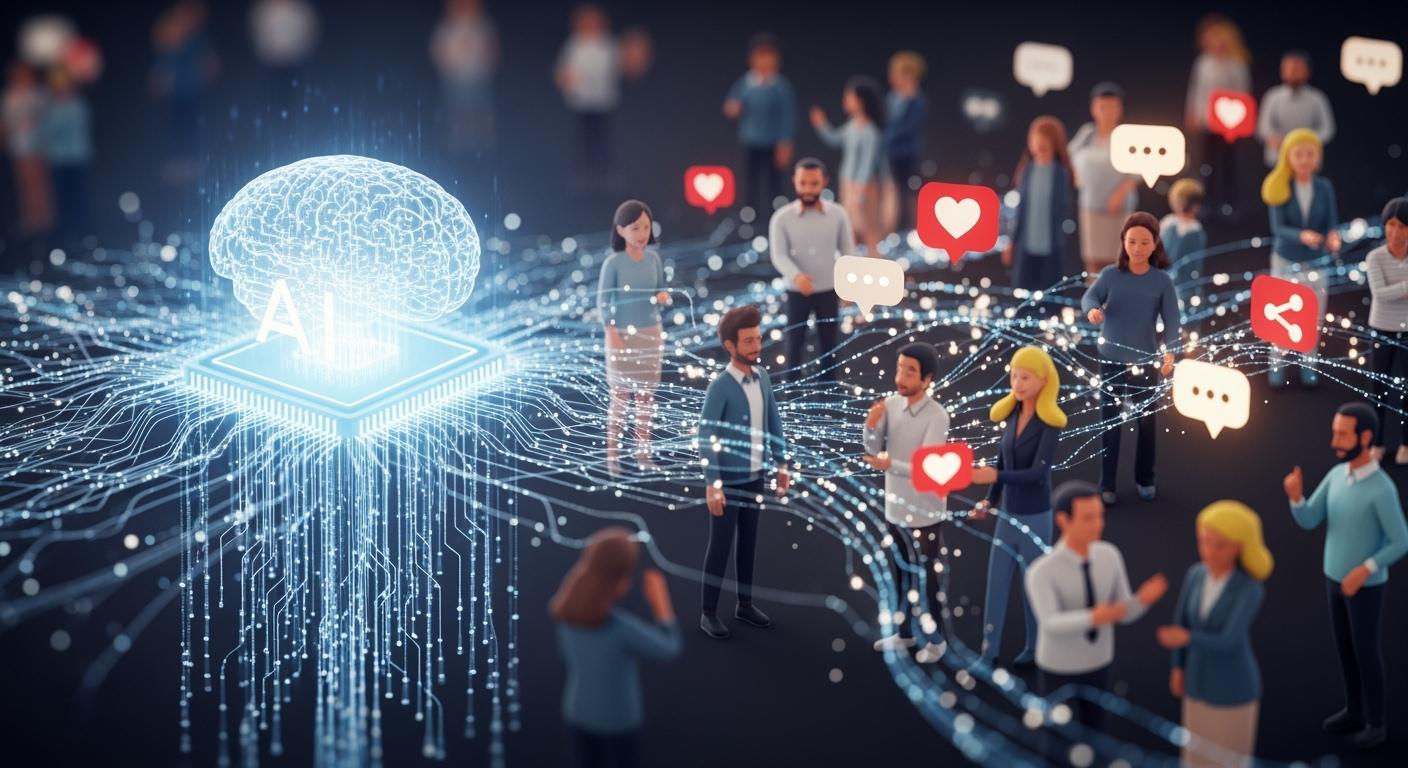
Artificial intelligence now revolutionizes color forecasting. AI color palette generators analyze massive visual datasets from social media. This process uncovers emerging color patterns, unique color combinations, and cultural sentiments.
With over 50% of marketers using AI tools, ai color palette generators are central to ai-driven design.
AI color palette generators provide ai-driven color inspiration, revealing the color psychology behind trends. This ai-driven color palette generation creates a dynamic color palette. The color palette generation leads to personalized color palettes. AI color palette generators identify key color trends, from nostalgia's warm color to nature's calming color palette. Color palette generators offer a new way to see color.
How AI Analyzes Social Trends
AI color palette generators do not simply guess what colors are popular. They use a sophisticated process to analyze visual data from social media. This process turns millions of images and videos into actionable design insights. It is the foundation of ai-driven color palette generation.
Scraping Social Media Data
The first step is gathering data. AI systems scrape vast amounts of visual content from platforms like Instagram and Pinterest. This process requires powerful tools and careful planning. AI color palette generators use specific techniques to collect images effectively.
- Mobile-First Approaches: Scrapers often mimic mobile user behavior to avoid detection.
- Proxy Management: High-quality mobile proxies help hide the scraper's identity.
- Rate Limiting: The system makes requests at a human-like pace to prevent blocks.
- Account Rotation: AI distributes requests across multiple accounts to manage the load.
Several tools help developers with this task. The choice of tool often depends on budget and technical needs.
| Tool | Best Features | Downsides |
|---|---|---|
| Bright Data | Supports multiple IP types and has an advanced proxy manager. | More expensive, with plans starting around $500/month. |
| Octoparse | Offers cloud-based extraction, IP rotation, and a user-friendly interface. | Has a learning curve and limited features in its free version. |
Note: Data scraping involves important ethical and legal duties. Companies must follow data protection laws like GDPR in Europe and CCPA in California. These laws require user consent for data collection.
Scraping also has rules set by the social media platforms themselves. Many sites prohibit scraping in their terms of service. For legal and compliant data access, developers should follow best practices.
- Use Official APIs: Platforms provide Application Programming Interfaces (APIs) for authorized data access.
- Respect
robots.txt: This file tells scrapers which parts of a site to avoid. - Scrape Reasonably: Throttling requests prevents server overload.
- Limit Data Collection: Only save data that is necessary for the analysis.
Analyzing Colors, Emotions, and Context
After collecting images, AI color palette generators begin the analysis. They use computer vision to identify every color in an image. The AI must understand color like a human does, which is a complex task. For example, lighting and shadows can change how a color appears.
To solve this, AI algorithms use special color models. The HSV (Hue, Saturation, Value) color space is often preferred over the standard RGB (Red, Green, Blue) model. HSV separates a color's pure hue from its brightness. This makes it easier for AI to identify a specific color under different lighting conditions. This technical ability allows ai color palette generators to understand the nuances of color psychology.
The AI does more than just see a color. It analyzes the context surrounding the color. It connects images of serene beaches with calming blues and greens. It links vintage-filtered photos to warm, nostalgic oranges and browns. This process is key to emotion-based palette creation. By understanding the feelings associated with different images, ai color palette generators can identify meaningful trends and suggest powerful color combinations. This analysis is a core part of ai-driven design.
The Process of AI-Driven Color Palette Generation
The final step is creating a new palette. This is where ai-driven color palette generation truly shines. The system uses advanced machine learning models to produce beautiful and harmonious color palettes.
Several types of models are used for color palette generation:
- Generative Adversarial Networks (GANs): A GAN uses two neural networks. A "generator" creates a new color palette, and a "discriminator" judges its quality. The generator learns from this feedback to create better palettes over time.
- Transformers: These models process images as a sequence of tokens, similar to how they process words in a sentence. They can generate a diverse palette based on an input image or theme.
- Diffusion Models: These models start with random noise and gradually refine it into a coherent image, or in this case, a color palette. They are very effective at creating high-quality results.
An ai-powered color palette generator follows a clear, three-step process for color palette generation.
- Color Extraction: The AI first analyzes an image to identify the most dominant colors.
- Color Analysis: It then evaluates these colors using color theory rules. The AI ensures the colors work well together, creating schemes like complementary or analogous palettes. This analysis helps build personalized color palettes.
- Palette Generation: Finally, the system assembles a balanced and harmonious palette. AI color palette generators output the final colors with their hex codes, ready for designers to use in their projects.
This automated process allows ai color palette generators to create endless options for ai-driven design. The resulting palette is not random; it is a data-driven reflection of current social trends and human emotion. The color palette generation is both an art and a science, powered by AI.
Key AI-Identified Color Trends
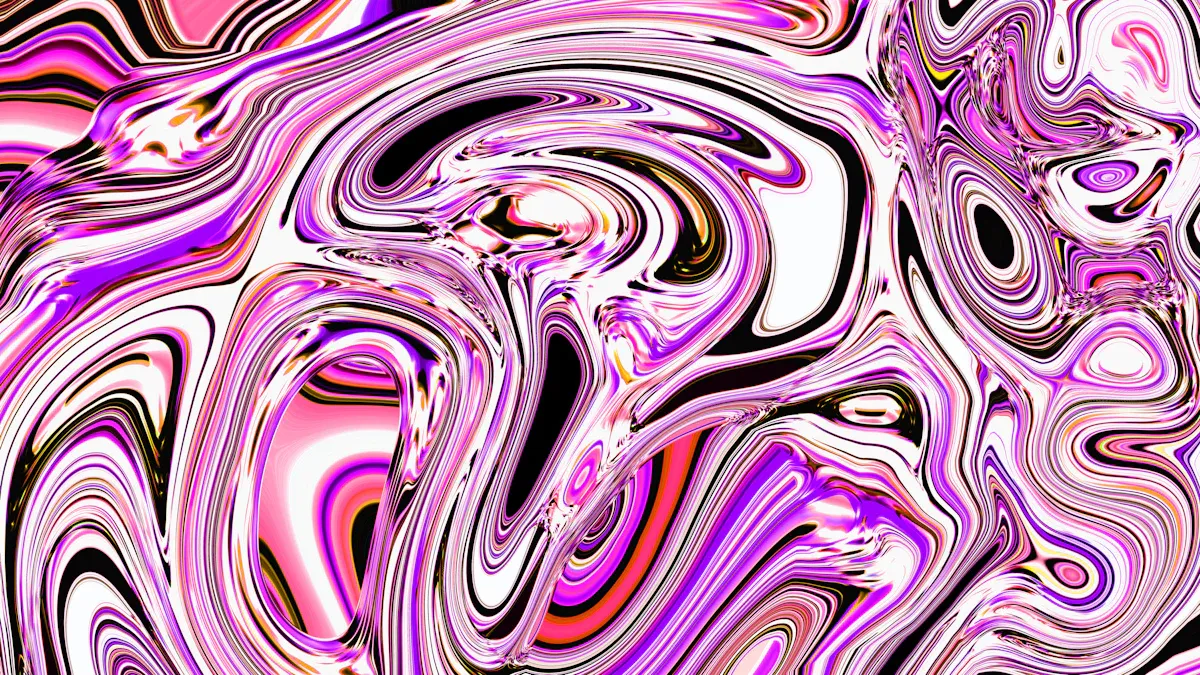
AI systems do more than just extract colors. They identify the emotional and cultural stories behind them. By analyzing millions of social media posts, ai color palette generators uncover major design trends. These trends reflect our collective moods, interests, and aspirations. The process of color palette generation reveals what truly connects with audiences.
Data-Driven Nostalgia
Nostalgia is a powerful emotion, and AI has learned to see it in pixels. AI color palette generators analyze content with hashtags like #tbt, #vintage, and #y2k. They identify visual patterns in retro-filtered photos, vintage fashion posts, and throwback graphics. This analysis reveals a clear public desire for the aesthetics of past decades.
I also have seen digital filters used in all types of videography and social media content these days; perhaps these “retro filters” on phones and cameras have helped push the aesthetic back into the spotlight as well.
AI tools pinpoint which eras are trending. The 1970s influence current trends with warm earth tones. The 1980s bring bold Memphis-style patterns. The 1990s reintroduce bright neon colors into modern fashion and branding. This data helps create a specific color palette that feels both familiar and fresh. For example, companies like Bella Virtual Staging use AI to apply authentic period aesthetics to properties, showing how these trends are used commercially. The color psychology here connects to feelings of comfort, happiness, and simpler times.
| Color Name | Hex Code |
|---|---|
| Harvest Gold | #DA9100 |
| Avocado Green | #568203 |
| Burnt Orange | #CC5500 |
| Faded Denim | #6E84A3 |
Biophilic and Wellness Palettes
Social media is full of content about wellness, nature, and self-care. AI color palette generators scan images of lush houseplants, serene landscapes, yoga retreats, and healthy meals. This analysis uncovers a strong connection between wellness themes and a specific color family. The resulting biophilic palette is dominated by greens, blues, and earthy browns.
This trend is a direct response to our digital lives. People seek balance and a connection to the natural world. The color psychology of these palettes is centered on calm, growth, and rejuvenation. A soft green color can reduce stress. A deep blue color can create a sense of stability. AI identifies these patterns and helps designers use them effectively. This is a key part of modern ai-driven design. The color palette generation process turns these abstract feelings into a usable tool for brands in the health, wellness, and lifestyle sectors.
| Color Name | Hex Code |
|---|---|
| Sage Green | #B2AC88 |
| Terracotta | #E2725B |
| Sky Blue | #87CEEB |
| Rich Earth | #714F26 |
Cultural Fusion Colors
The world is more connected than ever. Social media platforms are a melting pot of global cultures. The ai-driven color palette generation process excels at identifying the vibrant color combinations that emerge from this fusion. AI analyzes content related to travel, global festivals, traditional textiles, and international cuisine. It finds unique palettes that blend colors from different parts of the world.
These cultural fusion palettes are often bold and energetic. They tell a story of diversity and creativity. For example, AI might identify a popular palette combining the deep blues and vibrant oranges of the Mediterranean. Another trend could be an earthy, Moroccan-inspired palette with dark teal, amber, and vermillion. These color combinations are exciting and unexpected. They help brands create a unique identity. Color palette generators can produce these personalized color palettes, giving designers a powerful tool for creating inclusive and dynamic visuals.
| Color Name | Hex Code |
|---|---|
| Dark Teal | #00585E |
| Amber | #FFBF00 |
| Vermillion | #E34234 |
| Squash | #F49F05 |
Practical Applications of AI Palettes
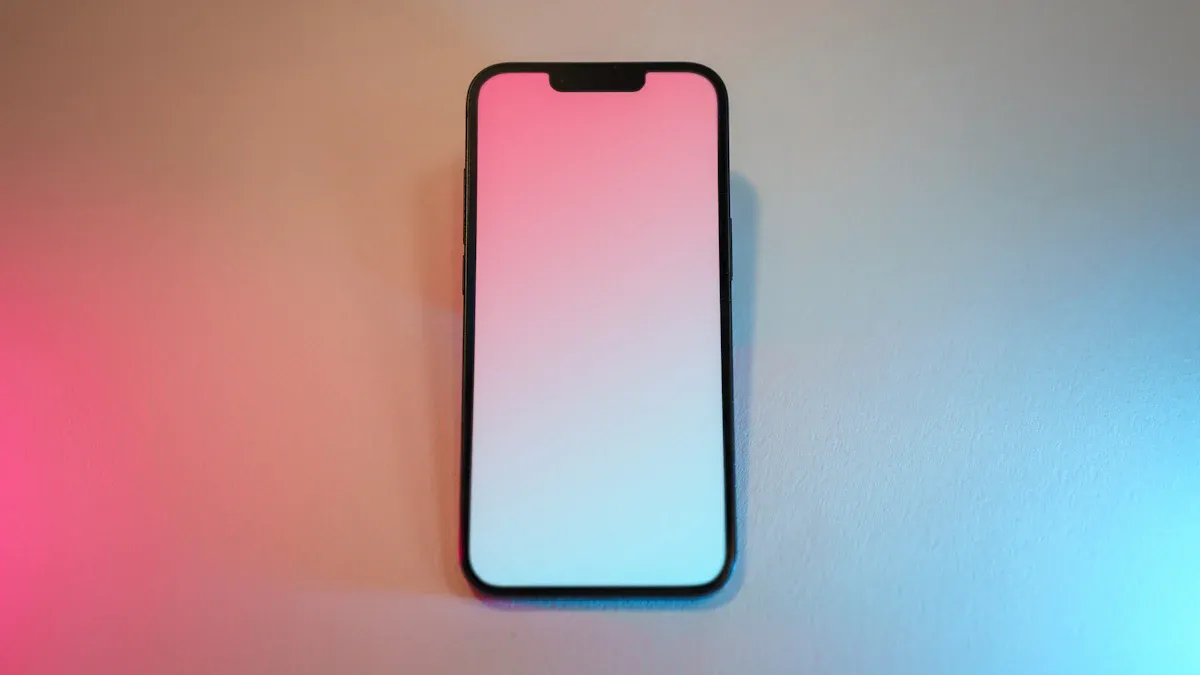
AI-identified color trends offer more than just inspiration. They provide practical tools for brands and designers. These tools help create cohesive marketing campaigns and innovative products. The right color can make a brand stand out.
Brand and Marketing Cohesion
Brands use AI to build a strong, consistent visual identity. AI-powered design tools analyze a brand's existing assets to ensure every new piece of content matches. Platforms like Typeface turn static brand guidelines into dynamic kits. This process keeps the brand color accurate across all marketing channels. AI also helps brands understand the competition. It can analyze a competitor's color schemes in ads and products. This gives a company insights to choose a unique palette and differentiate itself in the market. This is a key part of modern ai-driven design.
Using AI Color Palette Generators
Many effective ai color palette generators are available for designers. Tools like Colormind and Huemint analyze images and media to suggest beautiful color combinations. Some ai color palette generators, like Adobe Color AI, even include accessibility features to check for color blindness. These ai color palette generators are not just for digital use. They influence physical product design and packaging. The process of color palette generation helps brands connect with customers.
Many top brands use ai color palette generators to improve performance. The results show significant increases in customer engagement and sales.
| Brand | AI Tool Used | Performance Improvement |
|---|---|---|
| Netflix | Huemint | 10% increase in viewer engagement |
| Sephora | Colormind | 15% increase in sales |
| Coca-Cola | AI-powered color palette generation | 25% increase in brand awareness |
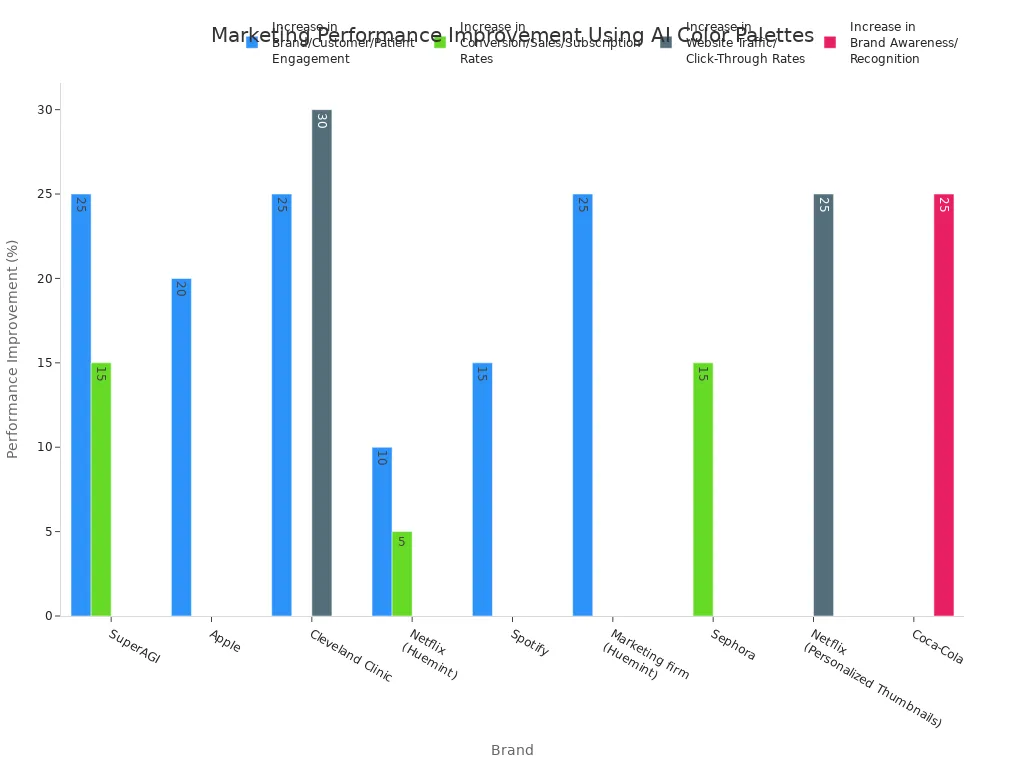
These ai color palette generators make ai-driven design accessible to everyone. The right color palette generation can transform a marketing campaign. Many ai color palette generators offer image upload features for better control. This makes the color palette generation process highly effective. The best ai color palette generators provide a strong starting point.
Balancing AI with Human Curation
The most successful ai-driven color palette generation involves human expertise. Designers use ai color palette generators for initial ideas and inspiration. Then, they use their creative intuition to refine the results. This workflow combines the speed of AI with the nuance of human creativity. A designer understands the deeper meaning and color psychology behind a specific color. They can adjust a palette to create personalized color palettes that truly resonate with an audience.
This collaborative approach leads to better outcomes. Companies report that this process increases design efficiency by 30%. It proves that the best results come from balancing technology with human skill.
AI color palette generators offer a dynamic alternative to traditional color forecasting. They analyze social media to find real-time color trends. This data-driven process is often more accurate than expert panels.
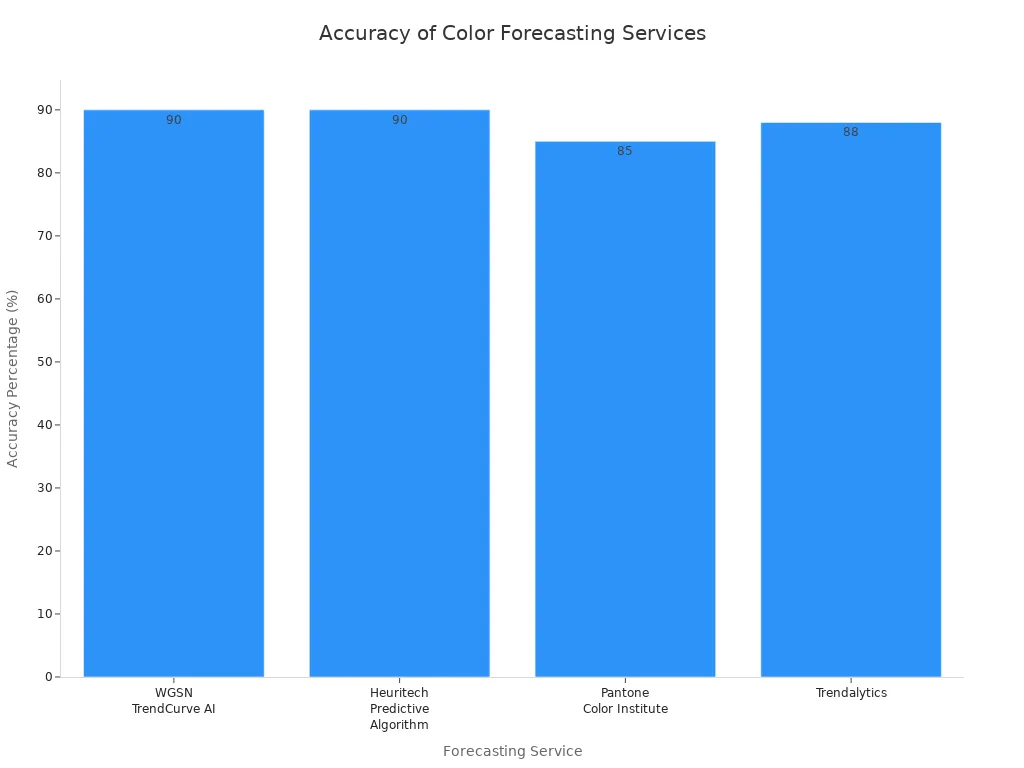
This technology identifies the popular color themes of nostalgia, wellness, and cultural fusion. The future of color selection involves a partnership. AI color palette generators provide data. Designers use their creative skill to refine the final color palette. AI color palette generators help designers choose the right color. AI color palette generators find the perfect color. AI color palette generators make color selection easier. The best color comes from this collaboration.
FAQ
What is an AI color palette generator?
An AI color palette generator is a tool. It uses artificial intelligence to analyze images and data. The tool then creates a harmonious color palette. This process helps designers find the perfect color combinations for their projects. The right color can improve any design.
How accurate are AI color trends?
AI analyzes millions of social media posts in real-time. This data-driven method makes its predictions on color trends very accurate. AI services often show higher accuracy rates than traditional forecasting. The technology identifies popular color themes as they emerge.
Can anyone use these AI color tools?
Yes, many AI color tools are user-friendly. Designers and non-designers can use them. Users often upload an image to get a color palette. The tools provide hex codes for each color. This makes applying the new color scheme simple for any project.
Does AI replace human designers in color selection?
No, AI is a collaborative tool. It provides data and inspiration. A human designer uses their expertise to refine the AI's suggested color palette. This partnership combines technology's speed with human creativity. The designer makes the final color choice for the best result.
See Also
AI's Role in Managing Rapidly Spreading Trends in Fast Fashion
Innovative AI Solutions for Sustainable and Eco-Friendly Fashion Practices
Leveraging Machine Learning to Forecast Fashion Trends and Elevate Sales
Dynamic AI for Optimal Safety Stock in 2025 Fashion Retail
AI-Powered Production Scheduling Driven by Demand for 2025 Operations